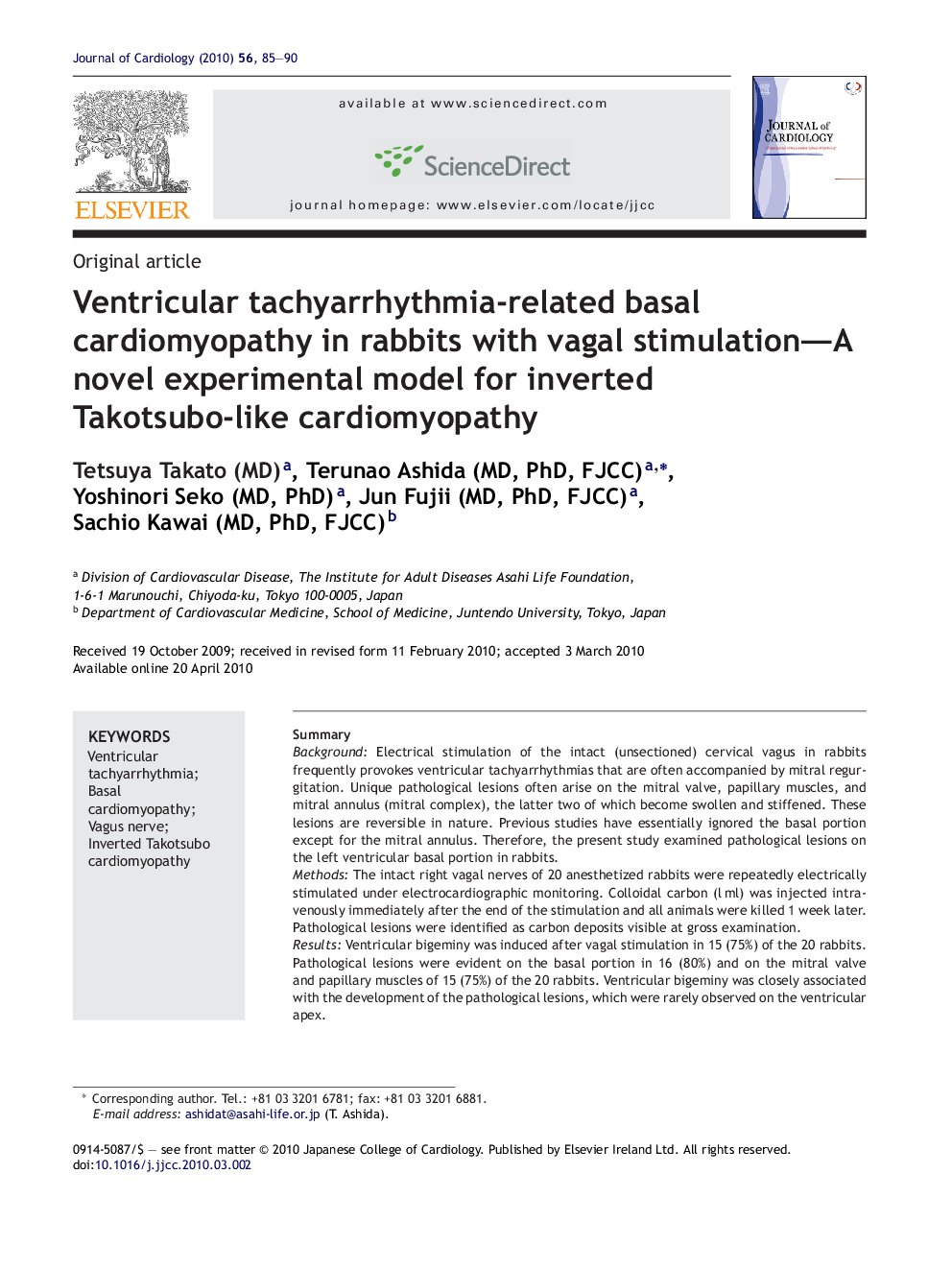| Article ID | Journal | Published Year | Pages | File Type |
|---|---|---|---|---|
| 2963620 | Journal of Cardiology | 2010 | 6 Pages |
SummaryBackgroundElectrical stimulation of the intact (unsectioned) cervical vagus in rabbits frequently provokes ventricular tachyarrhythmias that are often accompanied by mitral regurgitation. Unique pathological lesions often arise on the mitral valve, papillary muscles, and mitral annulus (mitral complex), the latter two of which become swollen and stiffened. These lesions are reversible in nature. Previous studies have essentially ignored the basal portion except for the mitral annulus. Therefore, the present study examined pathological lesions on the left ventricular basal portion in rabbits.MethodsThe intact right vagal nerves of 20 anesthetized rabbits were repeatedly electrically stimulated under electrocardiographic monitoring. Colloidal carbon (l ml) was injected intravenously immediately after the end of the stimulation and all animals were killed 1 week later. Pathological lesions were identified as carbon deposits visible at gross examination.ResultsVentricular bigeminy was induced after vagal stimulation in 15 (75%) of the 20 rabbits. Pathological lesions were evident on the basal portion in 16 (80%) and on the mitral valve and papillary muscles of 15 (75%) of the 20 rabbits. Ventricular bigeminy was closely associated with the development of the pathological lesions, which were rarely observed on the ventricular apex.ConclusionCardiomyopathic lesions involving the basal portion and mitral complex were frequently induced in rabbits by vagal stimulation. These lesions bear a close similarity in distribution and reversibility to inverted Takotsubo cardiomyopathy.
